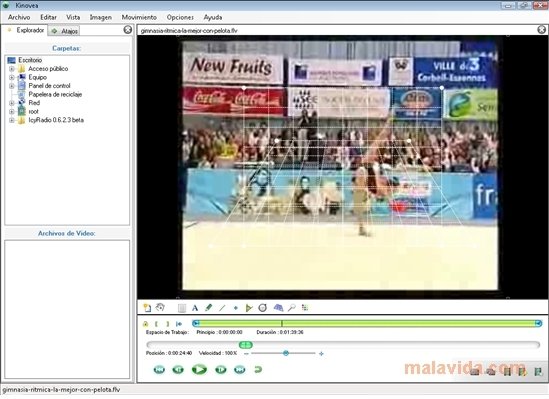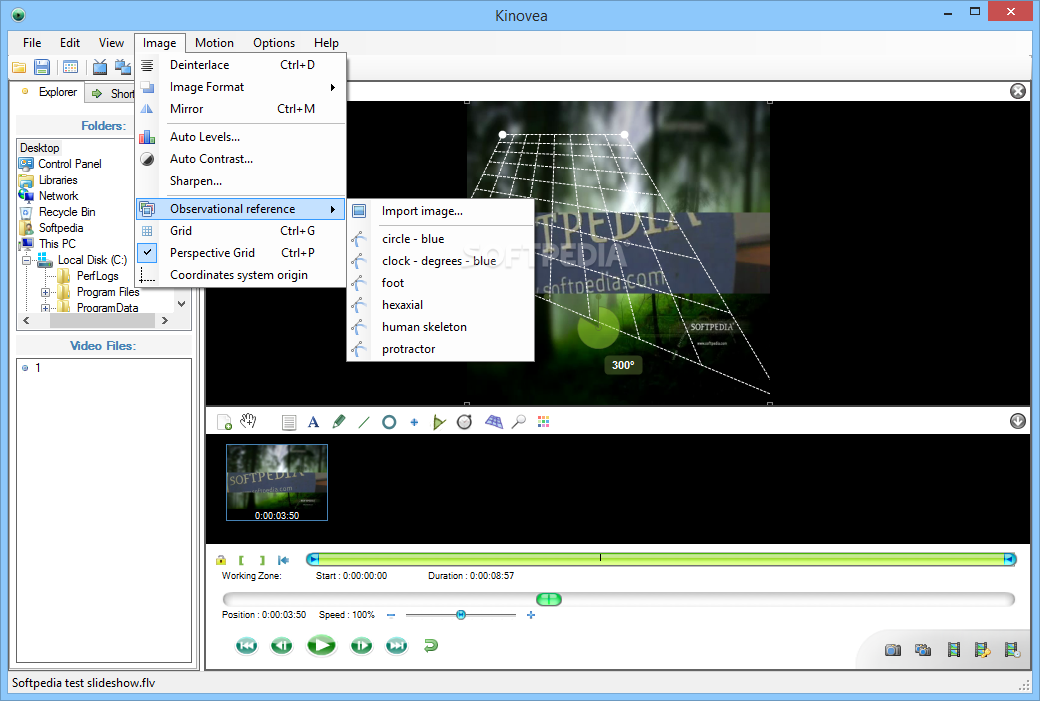
International Journal of Sports Medicine, 38(3), 217–225. Velocity loss as a variable for monitoring resistance exercise. M., Mora-Custodio, R., & Rodríguez-Rosell, D. European Journal of Sport Science, 14(8), 772–781. Maximal intended velocity training induces greater gains in bench press performance than deliberately slower half-velocity training. J., Rodríguez-Rosell, D., Sánchez-Medina, L., Gorostiaga, E. Revista Internacional de Ciencias Del Deporte, 8(27), 20–30. Confiabilidad entre instrumentos (T-Force® y Myotest®) en la valoración de la fuerza. International Journal of Sports and Coaching, (December), 1–45. Reliability and concurrent validity of the velowin optoelectronic system to measure movement velocity during free-weight back squat. Garcia Ramos, A., Perez-Castilla, A., & Martin, F. Journal of Strength and Conditioning Research, 21(2), 510–517.
Kinovea software free#
Validation of an optical encoder during free weight resistance movements and analysis of bench press sticking point power during fatigue. Validity and reliability of a linear positional transducer across commonly practised resistance training exercises. International Journal of Sports Medicine, 32(4), 254–258. Validating two systems for estimating force and power. Reproducibility and repeatability of five different technologies for bar velocity measurement in resistance training. Journal of Sports Science and Medicine, 9, 459–463.Ĭourel-Ibáñez, J., Martínez-Cava, A., Morán-Navarro, R., Escribano-Peñas, P., Chavarren-Cabrero, J., González-Badillo, J. Validity of a commercial linear encoder to estimate bench press 1 RM from the force-velocity relationship. Statistical Methods for Assessing Agreement Between Two Methods of Clinical Measurement. Ultrasound in Obstetrics and Gynecology, 31(4), 466–475. Reliability, repeatability and reproducibility: Analysis of measurement errors in continuous variables. Validity of Various Methods for Determining Velocity, Force and Power in the Back Squat - Banyard, Nosaka, Sato & Haff 2017.pdf. Journal of Strength and Conditioning Research, 28(2), 528–533. The concurrent validity and reliability of a low-cost, high-speed camera-based method for measuring the flight time of vertical jumps. īalsalobre-Fernández, C., Tejero-González, C. Journal of Sports Sciences, 36(1), 64–70. Validity and reliability of a novel iPhone app for the measurement of barbell velocity and 1RM on the bench-press exercise. īalsalobre-Fernández, C., Marchante, D., Muñoz-López, M., & Jiménez, S. Analysis of wearable and smartphone-based technologies for the measurement of barbell velocity in different resistance training exercises. īalsalobre-Fernández, C., Marchante, D., Baz-Valle, E., Alonso-Molero, I., Jiménez, S. Journal of Strength & Conditioning Research, 30(7), 1968–1974. Validity and reliability of the PUSH weareble devive to measure movement velocity during the back squat exercise. īalsalobre-Fernández, C., Kuzdub, M., Poveda-Ortiz, P., & Del Campo-Vecina, J. Validity and reliability of a computer-vision-based smartphone app for measuring barbell trajectory during the snatch. īalsalobre-Fernández, C., Geiser, G., Krzyszkowski, J., & Kipp, K. Statistical Methods for Assesing Measurement Error (Reliability) in Variables Relevant to Sports Medicine. The SHSC-Kinovea methodology resulted in similar kinematic values than criterion so it can be considered as a trustworthy instrument for measuring velocity-based training.Ītkinson, G., & Nevill, A. Pearson’s product moment correlation coefficient showed almost perfect association between all variables: ( r =.

11), whereas Vmax showed overestimation for the high range of measures: 0.55 ± 0.42 m/s ( r 2. Bland-Altman plots showed low systematic bias ± random error for RB: 1.11 ± 1.50 cm ( r 2. The mean differences between instruments were 1.11 mm for RB, 0.03 m/s for MV, 0.05 m/s for Vmax and 65.91 ms for CPT, all p <. 964) for RB, MV, Vmax and CPT, respectively.

The intra-class correlations coefficient between LPT and SHSC-Kinovea showed almost perfect agreement for consistency (.992. High-speed video recordings with a smartphone at 240 fps were used against a criterion linear force transducer (LPT) for measuring displacement of the barbell (RB), mean velocity (MV), maximum velocity (Vmax) and concentric phase time (CPT). Fifteen athletes were voluntarily recruited for the study (age 22.8 ± 2.9 years, height 182.9 ± 8.9 cm, body mass 79.5 ± 9.6 kg).

Kinovea software software#
The aim of this study was to validate the combination of smartphone high-speed camera and motion analysis software Kinovea methodology (SHSC-Kinovea) to measure kinematic variables of velocity-based training during back squat exercises.


 0 kommentar(er)
0 kommentar(er)
